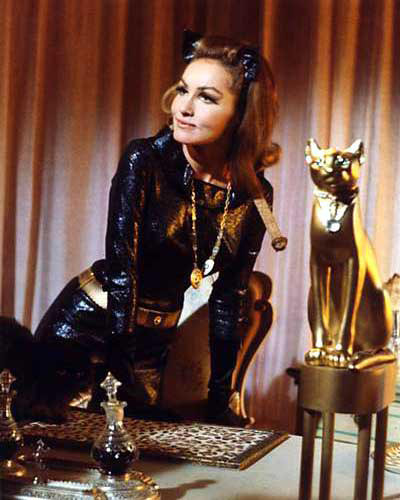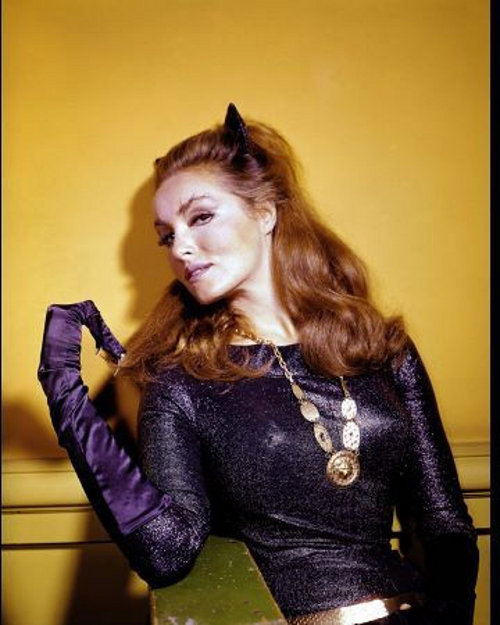Walking Through the Valley of Mist
A reader with the avian yet leonine name of Griffin ask this question:
I guess I’m curious about how you get from inspiration to actual words on the page… Do you start with an interesting idea and see where it takes you as you write? Your short stories tend to have a very strong structure, and both the internal and external references are very well woven. Do you find this difficult to achieve, or does it come easily, perhaps due to lots of practice? How much work is it to get from an idea like “the redemption of the animals” to the finished work posted above?
The short answer is that writing is like walking through a valley of mist. Before setting out, you see the peak on the far side of the valley where you want to end up, you pick out, as best you can from your coign of vantage on the ridge before entering the valley the likely landmarks you need to hit to make your way from the one to the other, and then you place your faith in the elusive native guides called muses, you check your napsack of writer’s tricks and sleights of hand, and you set out.
The long answer is that Writing is like a magic trick. You trick the reader into imagining a world that does not exist. If the reader is imaginative, or if your story just so happens to remind him of some memory to which in him a rich vein of symbolism and deep emotion is attached, he thinks the story is deep and wondrous, full of insights, which then he ascribes to you.
If you are unwise, you believe his flattering assessment of your talent, and take credit for an act of imagination where the reader did most of the work, and your ego gets inflated. This is why many writers are jerks. Or if you have an ulterior motive, you ascribe the power of the story to the preaching of the particular philosophical or political point you were trying to make, and your sense of being a visionary gets inflated. This is why many writers are sanctimonious jerks.
If you are wise, you ascribe the lucky accident of the intersection of your seed and his soil, and the fruit thereof to the inspiration of the muses, or other higher powers. This is why some writers are actually humble men deeply grateful for the chance to be a writer. Those men are real writers and true artists.
(Myself, I am a sanctimonious jerk who would like to be a deeply grateful true artist. The Blue Fairy told me that one day I would be a real writer. I asked her how, and she told me some confused nonsense about the Seven Lucky Gods of Shu Mountain. Gar! Never ask elves for counsel.)
But the problem is that if you tell the readers how the trick is done, then the trick is spoiled, and their imaginations get jaded because they consciously start looking for the tricks. So you cannot actually tell the reader that it is the reader’s imagination, and not the writer’s skill, which is the source of the mystery of art. It would be like a girl telling a guy she is trying to seduce the tricks and hesitations and flirtatious games used during the mating dance, or, worse a guy telling a girl he is trying to win when he is being sincere and when he is putting on an act. (The whole point of romance, like a spy thriller, is that the girl has to figure out what the guy’s real personality is like despite his false opinion of what his personality is like.)
Readers who are professional readers, that is, critics who are assigned books to read, see the tricks so often that the tricks no longer work on them, and so they never immerse themselves in the imagination of the story. They are like girls who have seduced or been seduced by too many men, and no longer enjoy the magic and danger of romance. Instead they look for technique, craftsmanship, word-cleverness, experimentalism, and other surface features that distract from story telling. And they like books like ULYSSES by James Joyce, where plotless stories with characterless characters are told with sparkling brilliance, and they dislike books like LORD OF THE RINGS by J.R.R. Tolkien, where brilliant plots with living characters are told with understated wordsmithing that does not draw attention to itself.
Now, like any magic trick, to pull it off requires practice and persistence and a knack for trickery and dumb luck and the intervention of the Seven Lucky God of Shu Mountain.
Unfortunately, I cannot tell any man how to get persistence or knacks, and I am not sure where Shu mountain is, but I can tell you that luck is mostly perspiration. And I can tell you my writing process, such as it is.
In this particular case, I realized that I wanted to do a short story for a holiday (I had previously done one for Halloween and Christmas) but had no story ideas. Most writers carry a notebook of story ideas they jot done when the inspiration strikes, as do I.
But, this time, since it was a religious short story, I prayed for inspiration, and got the visual image of a parliament of animals outside an empty city of man, and the idea of uplifted animals or underpeople from Cordwainer Smith or like something from Lester Del Rey’s first short story (whose name I forget — go go gadget Internet! — ‘The Faithful’)
For an animal story, I could use stock characters — the fox as a philosopher, the lion as a politician, and the cat as Julie Newmar, the Catwoman — without needing much character development; and to create an eerie mood, as in a Cordwainer Smith story, I could use a fairytale style of understated language, or, for a more religious mood, could use the elevated language of the King James Bible. Also from the Bible I wanted to take the image of the Great City of Babylon (which is an image of Rome or of Jerusalem, depending on your interpretation) to act as the setting.
No attempt to analyze my writing technique or personality is complete unless it takes into account my unhealthy obsession with Julie Newmar as Catwoman. No article of mine is free from utterly gratuitous and annoying pictures of Julie Newmar as Catwoman.
By the way, I am totally kidding. The Cat in the story has nothing to do with Catwoman, and I did not think of that until I sat down to write this answer to your question.
So I had my characters and my theme, and the opening image, but no real time to make up a plot. So, in this case, instead of outlining or thinking about it, I just dove in blindly and hoped for the best, which is why, if you notice, the story is weak and the ending is weak. If you did not notice the story is weak, but now that I told you, you do notice, all I can say is, that is why writers are unwise to talk about their stories.
So I had the idea of a Parliament of Beasts, but no idea of what they would be discussing, and had an image of a empty and evil city, but one glorious and strong, and the idea of a Biblical theme or ghostly mood, and certain mood I wanted to evoke with fairytale langauge.
I also had several ideas I had made up either for short stories I never got around to writing or role playing games, such as that the Dog was the first animal to leave Eden after man, and the Cat was the last.
I also had the idea that the control over nature we see in the miracles of saints could be the same control that prelapsarian man enjoyed — for who says Adam would not have been able to command storms to silence with the same authority as Jesus, the Second Adam, had he not fallen from grace? If so, once the Millennium is come, and man is risen into new and glorified bodies, all the miracles of the saints will be as second nature to us, and this includes Saint Francis and his communion with birds and beasts.
This gave me an easy explanation for how to do an uplift story, and to play a trick on the reader near the end — by having one character suddenly realize that the talking animals in a talking animal story should not be talking. The trick is dangerous, because it breaks the fourth wall, and brings the reader’s attention to a diegetic conceit — sorry if that sounds technical. What I mean is that it is like having a character in a movie react to a music that you the audience was lead to believe was soundtrack music, or like having a character in a play make reference to the curtain or stage-lights or audience. It tends to break the spell.
But if the reader has been lulled into a sense of goodwill by the plot, or, better yet, if the reader’s curiosity has been lured into wondering what will happen next, the spell is too strong to resist. Curiosity is the writer’s best friend. Reader will slog through total crud of bad writing to find out who the mysterious figure in the window actually was, or by what power Jahi persuaded that statue in the garden of the House Absolute to dance. In this case, the mystery was not set up was well as it might have been, but I was trying to get the reader to wonder why the city was empty and why the animals were afraid.
Finally, instead of a plot, I had a conceit drawn from several theological speculations of my own, namely, whether animals go to heaven (reason says no, but hope says that if animals were made for man, man might be able to redeem his servants) and why God acts through intermediaries, or listens to prayers, rather than solving all problems directly, or creating a universe where no problems ever had been able to exist.
So I set up a situation where, like the Jews moving into a spot where the devil worship was perhaps the worst in all the pagan world (temple prostitution and child sacrifice and so on) the uplifted animals were being assigned to inherit what seems like a pretty bad city—a place like Rome at the height of her pagan strength and cruelty, and a situation where not all the animals would accept the gift of speech. That idea comes from THE LAST BATTLE by C.S. Lewis.
And I threw a few other ideas I had stolen from a few other places into the mix, and tried to end on a note of uncertainty, a question, to imply that there is something deeper going on.
Now this does not really answer your question, which is more general. Usually I write a rough outline, and usually I reach a point slightly past the halfway mark where the outline is outmoded, and I rewrite it, or simply write according to the logic of what I have already established, and trust my heroes and villains will be smart enough to think of something clever and entertaining to do to get out the situations into which the villains and heroes put them.
The one exception was NULL-A CONTINUUM where I wrote a very detailed outline in order to persuade the widow of A.E. van Vogt to grant me permission to write the story, and, with the exception of an unexpected expansion of the scene on the planet Petrino, I stuck to the outline. On the other hand, when writing THE GOLDEN AGE, I did not know the identity of the old man whose comment in the garden in first chapter set in motion the whole chain of events until I was typing the sentence where he revealed his identity to Daphne in the last chapter. That was a stroke of pure inspiration.
A good writer knows when to stick to his outline and when to deviate for a better idea or a logical outgrowth of something in the story previous unforeseen. He knows it half by knack, half by instinct, and half by a judgment formed by experience.
Now, you might say that that is three halves, and you’d be right. But those three halves are only half the story. The other half is being too stubborn to quit when your outline breaks or when you cannot see your way clear into finding your ending.
I do not believe in writer’s block. I believe in muses’ brake. The muse slams on the break when you are going down the wrong path, and the path will not lead to the ending you want or the ending the plot logic demands. If you find yourself stuck on a scene, you back up, you throw away your work, usually the scene you like best of all, and you try again in another direction.
Any scene you throw away, you keep in that notebook I mentioned above, and use it again in a later bit of writing. Nothing is wasted. Everything is grist for the mill.
By the way, I am totally kidding about having an unhealthy obsession about Julie Newmar as the Catwoman. My obsession extends to all versions of the Catwoman, except the one played by Halle Berry.



